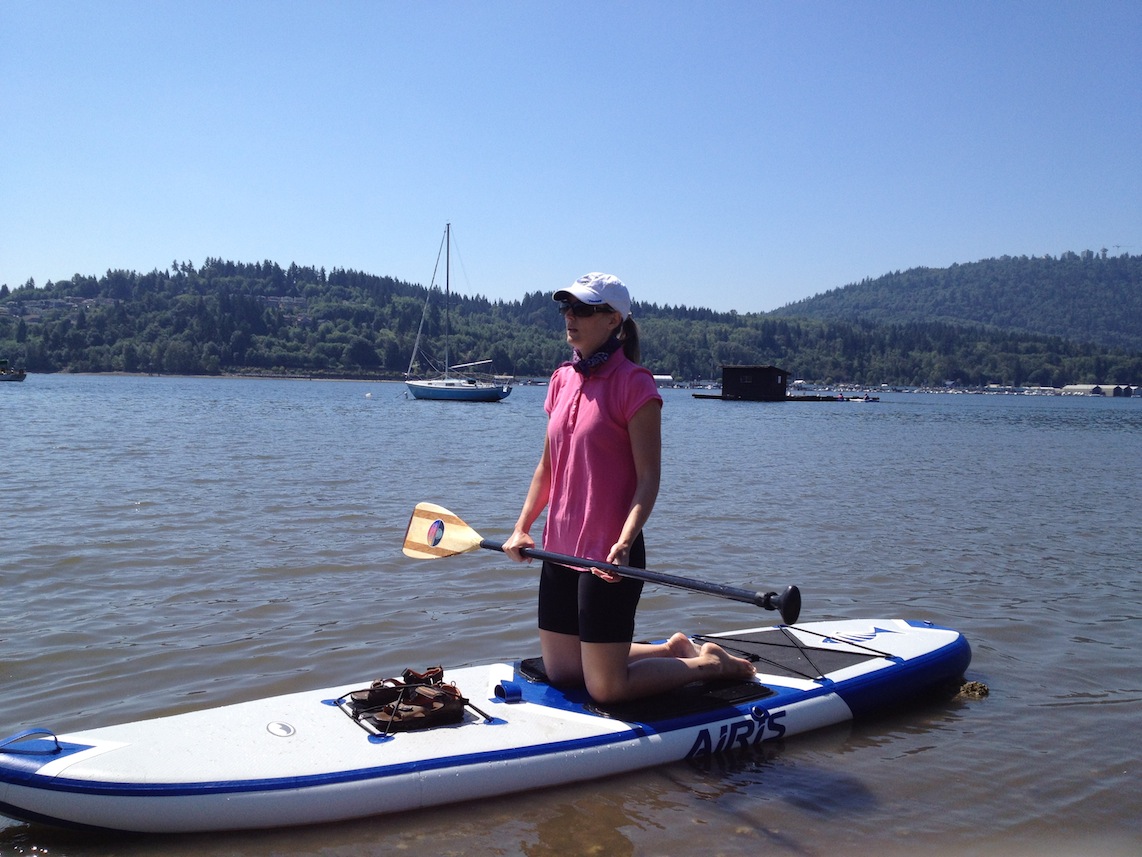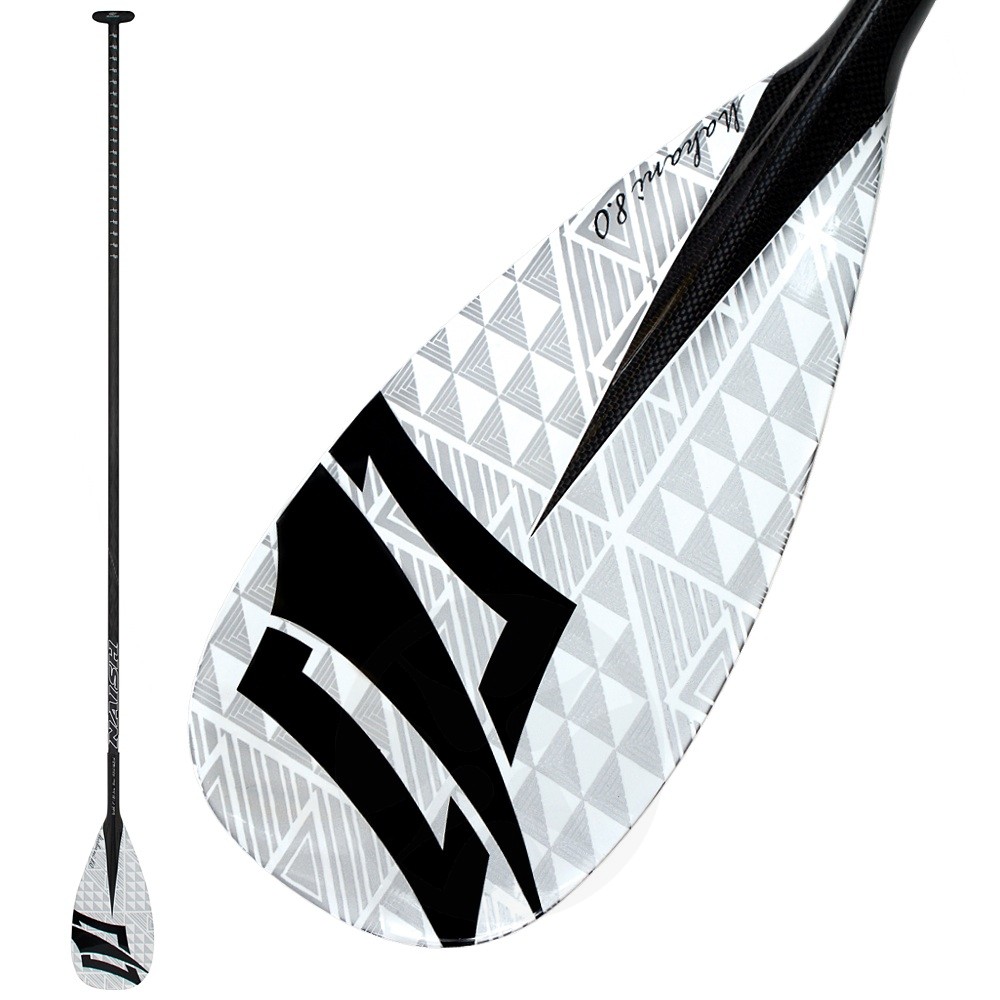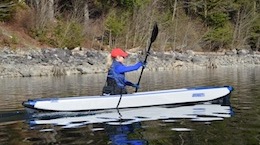
You’ve picked out your board, now it’s time to find the right SUP paddle.
There are many to choose from and any paddle will work. However if you want to paddle as efficiently as possible there are a few things to know before you make that purchase.
The Basics
A stand up paddle has three sections:
- the t-grip at the top which is what your hand holds onto
- the blade at the bottom that strokes through the water
- the shaft in the middle which connects the t-grip and the blade
The Length
The length of the paddle will depend on the type of stand-up paddling you will be doing.
Surf or Whitewater: For surf your paddle should be roughly 8 inches taller than you are.
Touring or Cruising: For touring or cruising around your paddle should be between 10” – 12” taller than you. A good rule of thumb is to stand with your paddle next to you (with the blade touching the floor). The t-grip at the top of the paddle should be at your wrist when you arm is stretched right up over your head. If it does not touch your wrist then it is too short for you.
If more than one person will be using your paddle then an adjustable paddle is the way to go. That way the length can be adjusted depending on the height of the person using it.
An adjustable paddle is also ideal if you want to be able to use it for both surf and touring.

Blade Size
As a general rule, the larger you are the larger the blade you can handle.
For surf or whitewater paddling with a larger blade is good as it will give you more leverage against the water.
However keep in mind that a larger blade also means more weight, which could be hard on your joints over time.
A smaller blade is typically better for touring, recreation or racing. A smaller blade allows for quicker and more efficient strokes through the water.
Most SUP paddle blades are slightly bent. Many people when they first start stand-up paddling will paddle with the blade facing the wrong way – unless you have had a lesson and learned the proper strokes.
Yep I did this. I paddled with my blade facing the wrong direction several times before someone told me I was paddling wrong.
It seems counter intuitive but the blade should be facing forward not backwards. When the blade is facing backwards (which looks right but is not) you will end up scooping water and have a less efficient stroke.
Paddle Materials
The pricing of most SUP paddles will depend on the materials that it is made with.
Aluminum/Plastic: The cheapest and most basic paddles usually have an aluminum shaft and a plastic blade.
These paddles will be the heaviest but also the best priced. They are fine for recreational use… if you will only be paddling a few times a year.
Fiberglass or Carbon: The fiberglass or carbon paddles are lighter weight and will take less effort to use.
They also tend to feel much better in your hand. However they are also usually more expensive.
Wood: Wood paddles can be very beautiful and also fairly light.
There are some companies such as Sawyer that are making wood combined with lightweight composites.
These paddles will not only look great but also feel fantastic to use. They are tough but have the flex of wood and will relieve pressure on your wrists and shoulders.
It is no problem to start off with a cheaper aluminum and plastic paddle. Just keep in mind that the better paddles will be stronger, lighter and more effective.
If you really get into your paddling, you will likely want to upgrade to a good paddle down the road.
In my experience the better the paddle, the happier you will be with your stand-up paddling experience.
However the bottom line is to go with a paddle you can afford. You can always upgrade to a better SUP paddle down the road.
Click here for a list of online retailers that sell SUP paddles.
 Tantrum Tow Ropes Aluminum SUP Paddle Review
Tantrum Tow Ropes Aluminum SUP Paddle Review How To Hold Your SUP Paddle Correctly
How To Hold Your SUP Paddle Correctly Airhead SUP Soft Edge Paddle Review
Airhead SUP Soft Edge Paddle Review Werner Trance SUP Paddle Review
Werner Trance SUP Paddle Review











Hi. I have a C4 waterman paddle , I’m confused which way for the blade in the water ?? Should the bend side be closest to me & the patten side be on the other side ???? Help
Hi Tammy, The direction of the blade is something that a lot of people get wrong at first because the correct way seems backwards. The bent side should be sloping away from you, so the angle faces away. I think it’s much clearer with pictures so check out this link as it provides some good pics of the right and wrong way to hold your paddle. http://www.distressedmullet.com/how-hold-paddleboard-paddle-correctly